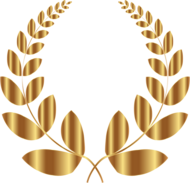University Physics Volume 1
(View Complete Item Description)University Physics is a three-volume collection that meets the scope and sequence requirements for two- and three-semester calculus-based physics courses. Volume 1 covers mechanics, sound, oscillations, and waves. Volume 2 covers thermodynamics, electricity and magnetism, and Volume 3 covers optics and modern physics. This textbook emphasizes connections between between theory and application, making physics concepts interesting and accessible to students while maintaining the mathematical rigor inherent in the subject. Frequent, strong examples focus on how to approach a problem, how to work with the equations, and how to check and generalize the result. Table of Contents Preface Unit 1. Mechanics Chapter 1: Units and Measurement Chapter 2: Vectors Chapter 3: Motion Along a Straight Line Chapter 4: Motion in Two and Three Dimensions Chapter 5: Newton's Laws of Motion Chapter 6: Applications of Newton's Laws Chapter 7: Work and Kinetic Energy Chapter 8: Potential Energy and Conservation of Energy Chapter 9: Linear Momentum and Collisions Chapter 10: Fixed-Axis Rotation Chapter 11: Angular Momentum Chapter 12: Static Equilibrium and Elasticity Chapter 13: Gravitation Chapter 14: Fluid Mechanics Unit 2. Waves and Acoustics Chapter 15: Oscillations Chapter 16: Waves Chapter 17: Sound Appendix A: Units Appendix B: Conversion Factors Appendix C: Fundamental Constants Appendix D: Astronomical Data Appendix E: Mathematical Formulas Appendix F: Chemistry Appendix G: The Greek Alphabet Index
Material Type: Textbook
















